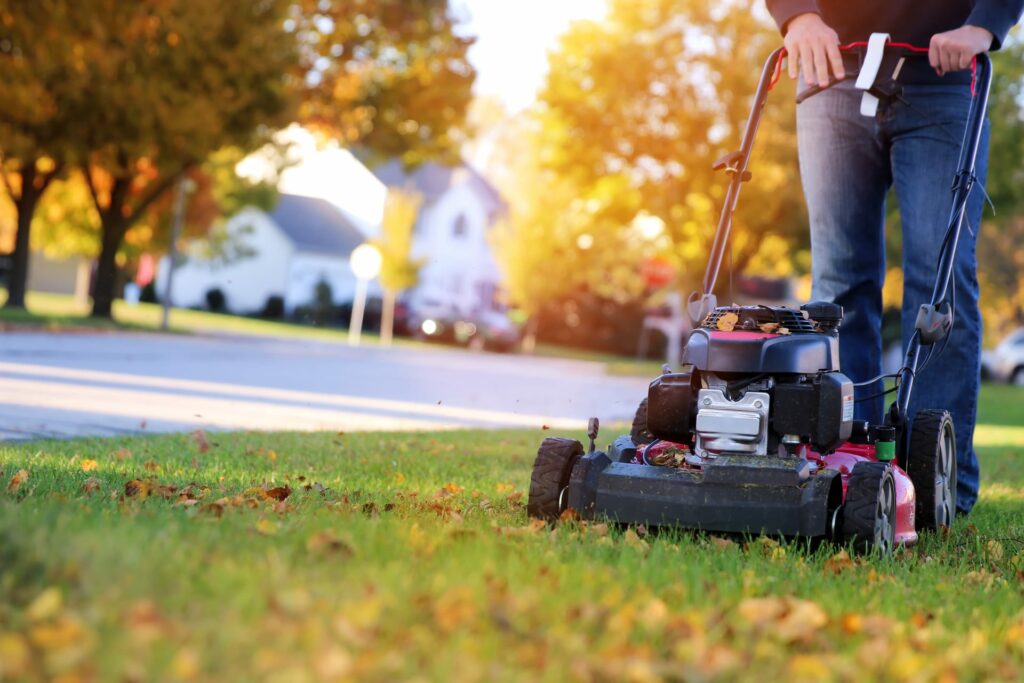Many believe the fall season is not ideal for taking care of your lawn. However, taking advantage of fall’s cool, moist weather will pay off next year. Lawn care in fall promotes better grass growth in summer.
Keep reading to learn our top 5 fall lawn care tips.

1. Keep Mowing
A yard needs regular mowing and lawn maintenance, even in the fall. Regular mowing also chops up pesky leaves. As a result, mowing creates a mulch that enhances soil health.
Furthermore, neglecting the lawn and not trimming the grass can lead to disease. Specifically, snow mold can develop in your lawn.
Usually, the grass will continue to grow until the first hard frost. Perform regular grass cutting to maintain an ideal height of two and a half to three inches.
In addition, know that it’s equally bad to cut the grass too short. Doing so impacts the root system, which reduces the lawn’s ability to survive the cold weather.
2. Add Nitrogen-Rich Fertilizer
Plant sugars give grass roots energy in the spring to bounce back after a long winter. They also protect the roots from freezing.
Grass produces these sugars through chlorophyll using the nitrogen in the soil. Lawn care experts recommend using an all-season 24-0-10 slow-release fertilizer.

These numbers represent nitrogen (24), phosphorus (0), and potassium (10) percentages by weight. Elevated potassium levels promote root growth with disease and cold weather resistance. Adding fertilizer provides the water and nutrients needed for a green and healthy lawn.
3. Water When Needed
Some people tend to stop watering their lawns as the weather turns cooler. Even though fall has more rain, it may not provide enough water to keep the grass roots properly hydrated. A well-hydrated lawn requires at least one inch of water every week.
Keep your irrigation system or sprinklers running until the end of October. In November, fall lawn care should mean flushing the irrigation system and disconnecting hoses to prevent the pipes from freezing. If you want to monitor the amount of water your lawn receives, purchase an inexpensive rain gauge.
4. Think about Soil Aeration
Every two to three years, you should aerate the soil to prevent compression and thick root buildup. These elements impede the flow of water, oxygen, and nutrients. Furthermore, these issues are common causes of grass blades turning brown or thinning.
If you notice your grass browning or thinning, use a core aerator to unplug the soil. Then, punch holes through the thick roots.

It’s a good practice to loosen or aerate the soil before adding fertilizer. The loose soil and holes will allow the fertilizer to reach the roots easily. Overall, aeration in the fall will allow your lawn to stay green and lush next year.
5. Spread More Seeds
Many lawn patches die in the summer, so start by reseeding those areas. Fall provides the perfect time of year to reseed, as the ground remains warm and the nights cool. Spreading seed will fill in bare spots and introduce drought-tolerant, resilient grass.
We hope you enjoyed reading our top 5 fall lawn care tips!